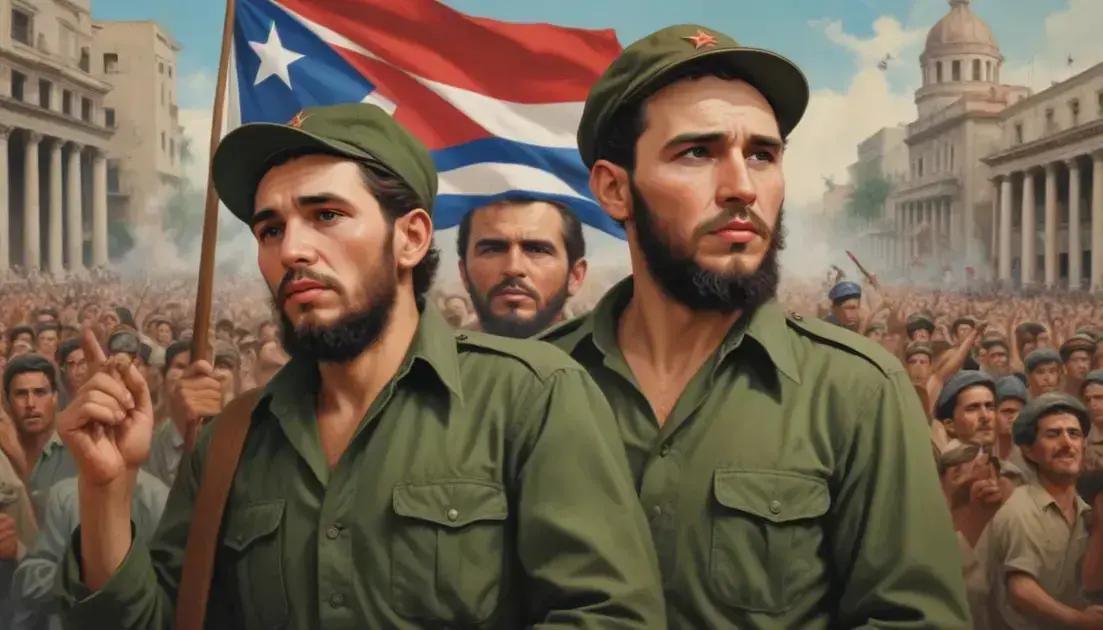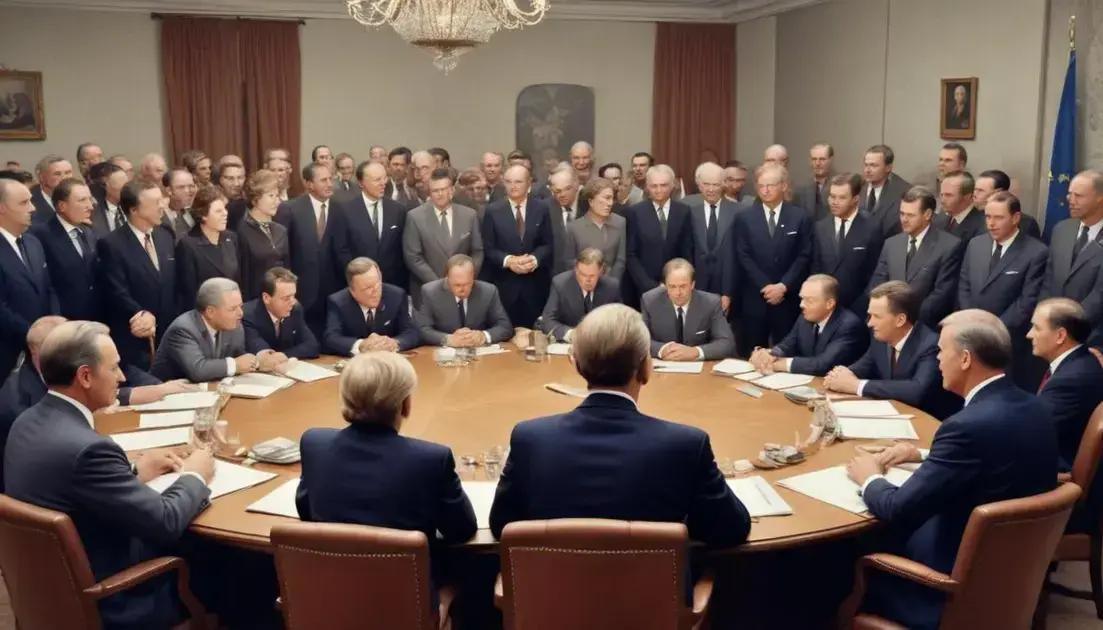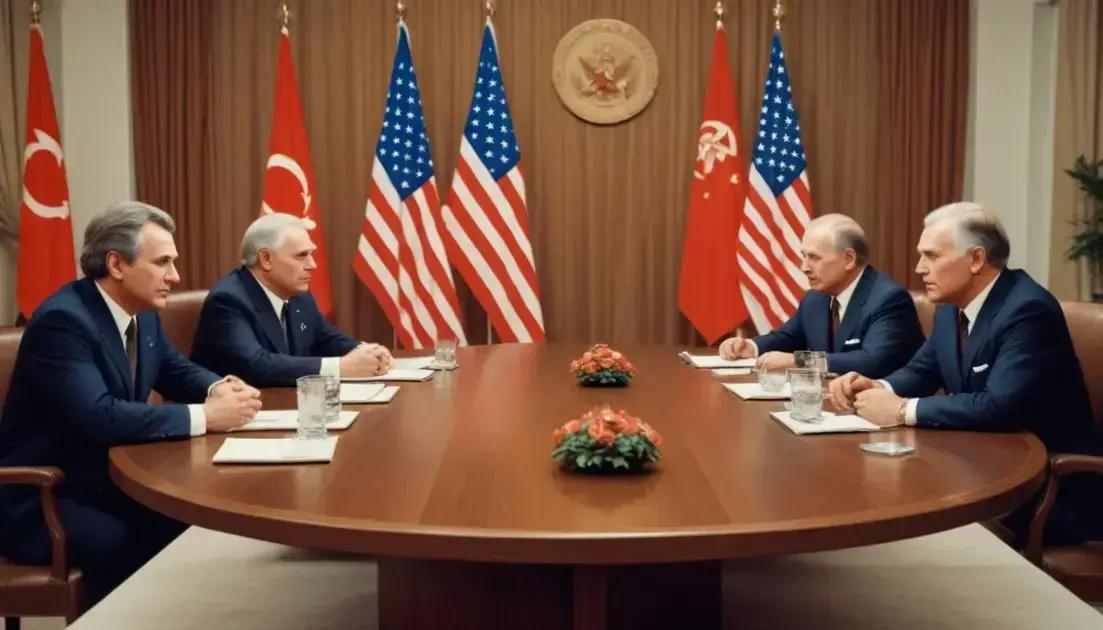
Cuban Revolution: Socialism Reaches the American Continent
The legacy of the Cuban Revolution significantly influenced social, political, and economic aspects in Cuba and beyond. It prioritized healthcare and education, inspiring other leftist movements globally. Despite facing challenges due to the US embargo, Cuba’s focus on local resources has fostered resilience. Culturally, the revolution enriched Cuban identity, producing art and literature that reflect themes of freedom. Today, debates continue about its methods and impact, highlighting its relevance in discussions on justice and equality worldwide.
The Cuban Revolution was a pivotal moment that reshaped the fabric of Latin America. As Fidel Castro and Che Guevara took up arms against Batista, they sparked a wave of change that still resonates today. Ready to dive into this compelling story?
Fidel Castro’s rise to power
Fidel Castro’s journey to power began in the 1950s. He led a revolt against the Cuban dictator, Batista, who ruled with an iron fist. Castro’s leadership brought hope to many Cubans. They wanted change, and he promised just that.
Early Life and Influences
Castro was born in 1926. He grew up in a wealthy family but saw the struggles of the poor. This shaped his views on society and politics. He became interested in social justice and helping the less fortunate.
The Move to Revolution
In the early 1950s, Castro started organizing a revolution. His first attempt in 1953 failed, and he was arrested. However, he didn’t give up. After his release, he continued to gain support for his cause.
Guerilla Warfare in the Mountains
Castro and his followers took to the mountains. They practiced guerrilla warfare against Batista’s army. Their strategy was simple: hit hard and retreat. This surprised the larger military forces and won them many battles.
Support and Solidarity
As the revolution gained momentum, more people joined Castro’s fight. Many young people, students, and workers supported him. They saw him as a champion for the underprivileged and a leader who could change Cuba for the better.
The Fall of Batista
After a long struggle, Batista fled Cuba in January 1959. This marked the end of his regime and the rise of Castro as the new leader. The Cuban people celebrated this victory, seeing Castro as their liberator.
Castro’s rise to power changed Cuba’s political landscape. He implemented reforms aimed at improving education and healthcare. However, his methods also sparked controversy and led to tensions with the United States.
Impact of Che Guevara
Che Guevara was a key figure in the Cuban Revolution. His impact was felt not just in Cuba, but around the world. Many saw him as a symbol of rebellion against injustice.
Guevara’s Early Life
Born in Argentina in 1928, Che experienced poverty and class struggles. These issues sparked his passion for social change. He wanted to help the oppressed and fight for their rights.
Joining the Revolution
Che met Fidel Castro in Mexico. They quickly became friends and allies. With Castro, Che played a crucial role in overthrowing Batista’s government. His dedication and bravery inspired many fighters.
Military Strategies
Che was known for his guerrilla tactics. He believed in using small groups to engage larger forces. This approach proved effective during the Cuban Revolution. Che’s strategies influenced future revolutionary movements.
Role in the New Government
After the revolution, Che held several important positions. He served as Minister of Industry and helped reshape Cuba’s economy. He focused on healthcare and education, believing they were essential for progress.
Legacy as a Revolutionary Icon
Che Guevara’s image became famous worldwide. He represented the fight against imperialism and capitalism. People admired his commitment to changing the world for the better. Even today, his likeness appears in art and protests.
Guevara’s impact goes beyond Cuba. He inspired many to stand up for their beliefs. His legacy is a reminder of the power of conviction and the fight for justice.
US intervention in Latin America
The US has a long history of intervention in Latin America. This involvement often aimed to protect American interests. However, it frequently led to political and social unrest in the region.
Early Interventions
In the 19th century, the US used military force to influence Latin American countries. The Monroe Doctrine was a key part of this approach. It stated that European powers should not interfere in the Americas.
CIA Operations and Regime Changes
During the Cold War, the CIA took actions to prevent communist movements. This included supporting coups against democratically elected leaders. Notable examples are Guatemala in 1954 and Chile in 1973. These actions caused deep divisions and crises in those countries.
Impact on Local Economies
US interventions often disrupted local economies. When governments were changed, policies shifted suddenly. This left many people struggling with instability and uncertainty about their future.
Modern-Day Consequences
Today, the effects of past interventions are still felt. Many Latin American countries face ongoing challenges. Issues such as poverty, corruption, and violence can be traced back to foreign involvement.
The Ongoing Debate
The debate around US intervention remains. Some argue it was necessary for stability, while others feel it caused more harm than good. What’s clear is that history plays a big role in current relations between the US and Latin America.
Cuba’s socialist policies
Cuba’s socialist policies have shaped its society and economy since the revolution. These policies aim to provide equality and reduce poverty among its citizens.
Healthcare System
One of the most praised socialist policies is Cuba’s healthcare system. The government offers free healthcare to all citizens. This policy focuses on prevention and education. Doctors often visit communities to provide care and check-ups.
Education for All
Cuba also prioritizes education. The government ensures that every child has access to free schooling. From primary to higher education, students learn without paying tuition fees. This commitment has led to high literacy rates in the country.
State-Controlled Economy
The economy is mostly state-controlled, which means the government owns most businesses. This approach aims to provide jobs and services to the community. However, it can lead to challenges like inefficiency and lack of innovation.
Food and Rationing
Cuba has a rationing system to ensure all citizens receive basic food supplies. While this system helps those in need, it can limit variety and availability. Many people still struggle to access enough food daily.
Challenges of Socialism
While Cuba’s policies aim for equality, they face criticism. Some say the government suppresses individual freedoms. Others argue more market reforms are needed to drive growth. The debate continues on how to improve the system while keeping its core values.
Legacy of the Cuban Revolution
The legacy of the Cuban Revolution is strong and complex. It influenced not only Cuba but also other nations around the world. Many look to Cuba as a symbol of resistance and change.
Social Changes
After the revolution, Cuba made significant social changes. Education and healthcare became priorities for the government. These reforms aimed to improve the quality of life for all citizens.
Political Influence
The revolution inspired many leftist movements globally. Leaders in various countries admired Cuba’s fight against imperialism. This led to partnerships and support among revolutionary groups.
Economic Impact
Economically, Cuba’s shift to socialism brought challenges and successes. The embargo imposed by the United States limited trade. However, the focus on local resources has built resilience in Cuban society.
Cultural Identity
The revolution also shaped Cuban culture. Music, art, and literature from this era reflect themes of freedom and resistance. These cultural expressions resonate both locally and internationally.
Ongoing Relevance
Today, the legacy of the Cuban Revolution continues to spark debate. Some praise its ideals, while others criticize its methods. This ongoing discussion keeps the spirit of the revolution alive.
Conclusion
In conclusion, the legacy of the Cuban Revolution remains significant today. It sparked social changes that improved education and healthcare for many. The political influence of the revolution has inspired movements globally, encouraging others to fight against oppression.
Economically, Cuba has faced challenges but has built resilience in its communities. Culturally, the revolution has enriched Cuba’s identity, reflecting themes of freedom and creativity.
As discussions about the revolution continue, its impact is clear. It motivates new generations to think about justice and equality. Understanding this legacy helps us appreciate the ongoing quest for change around the world.


